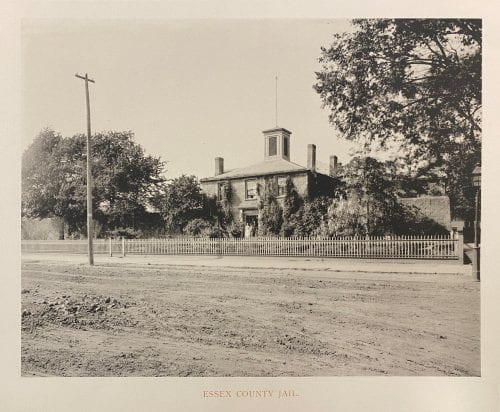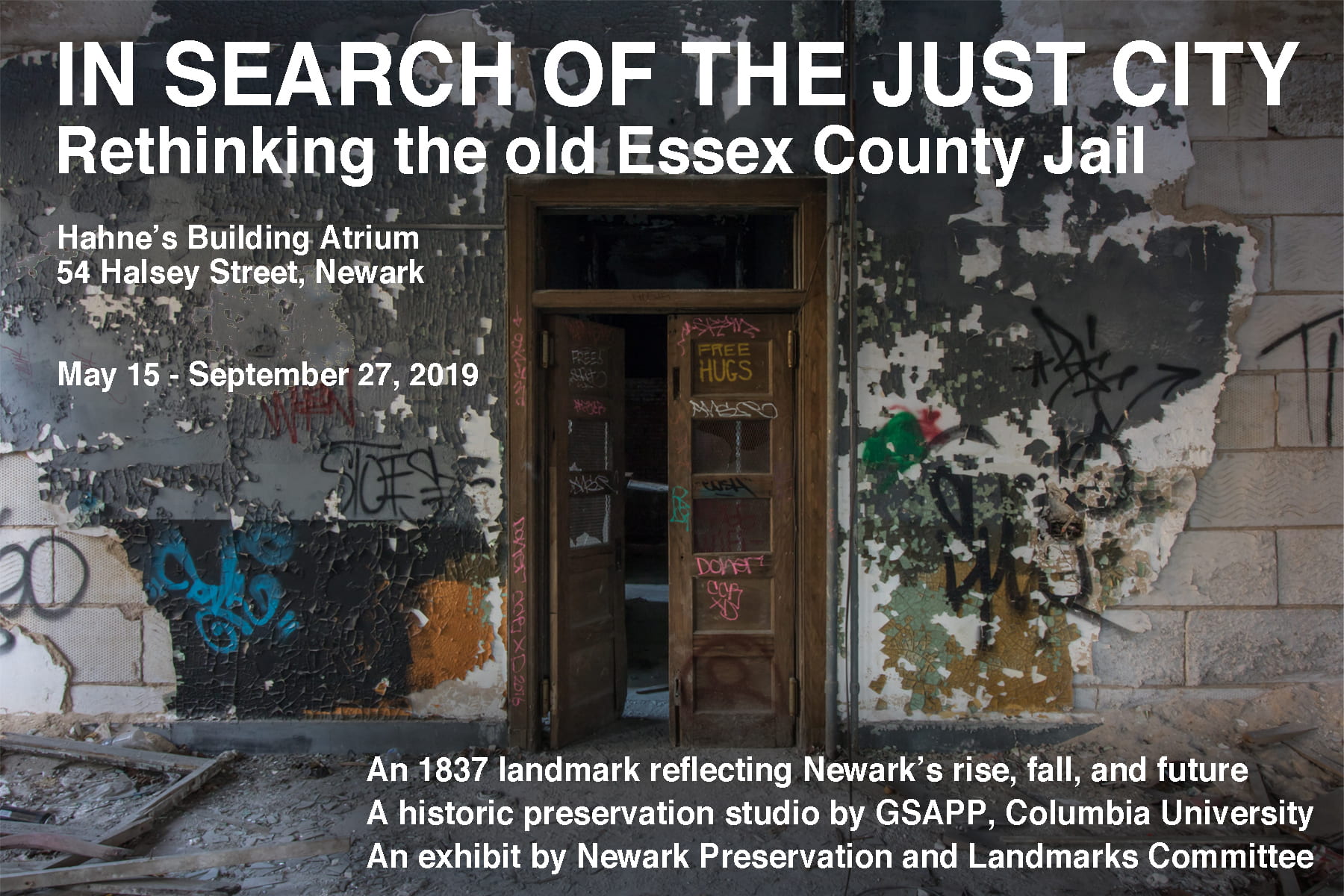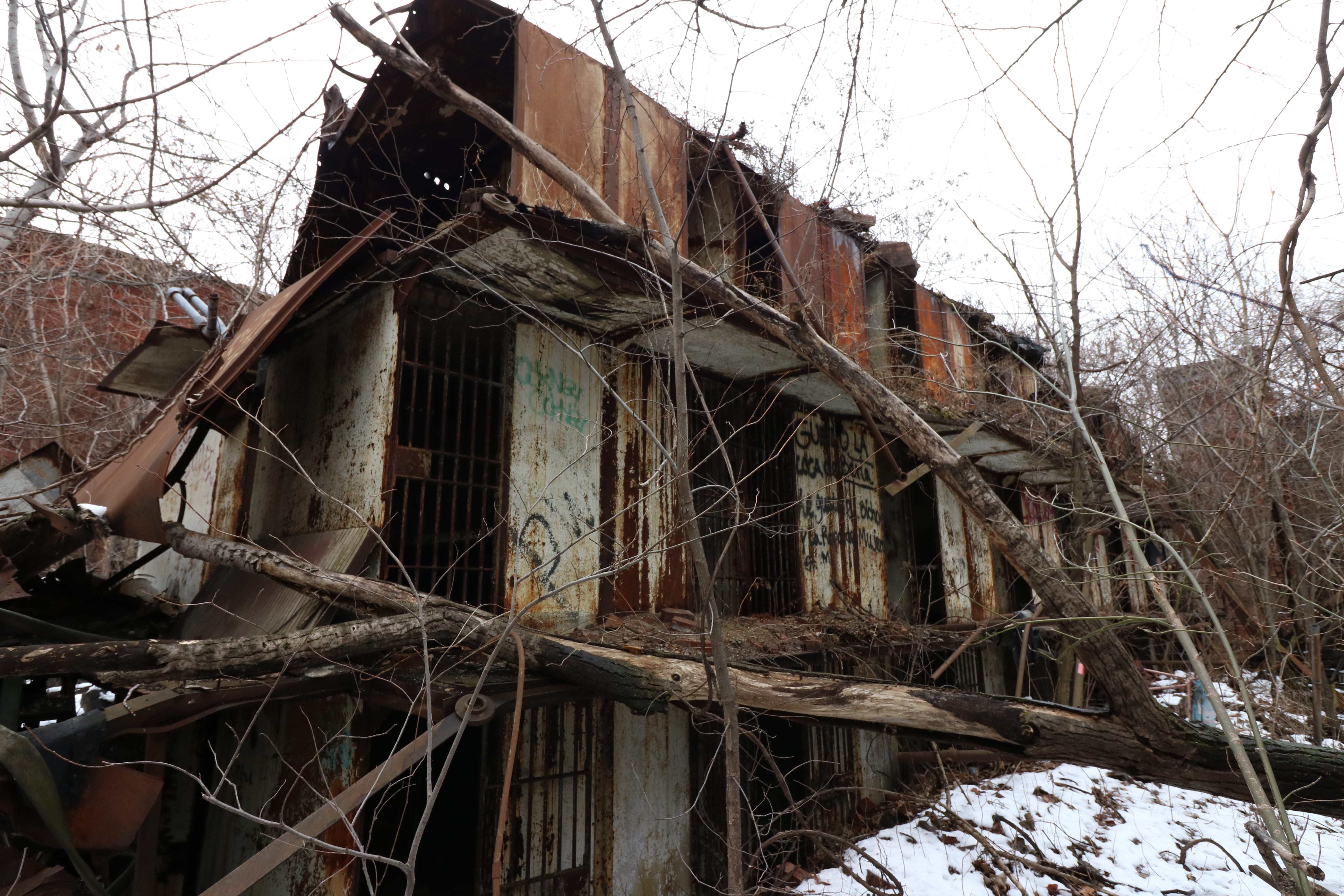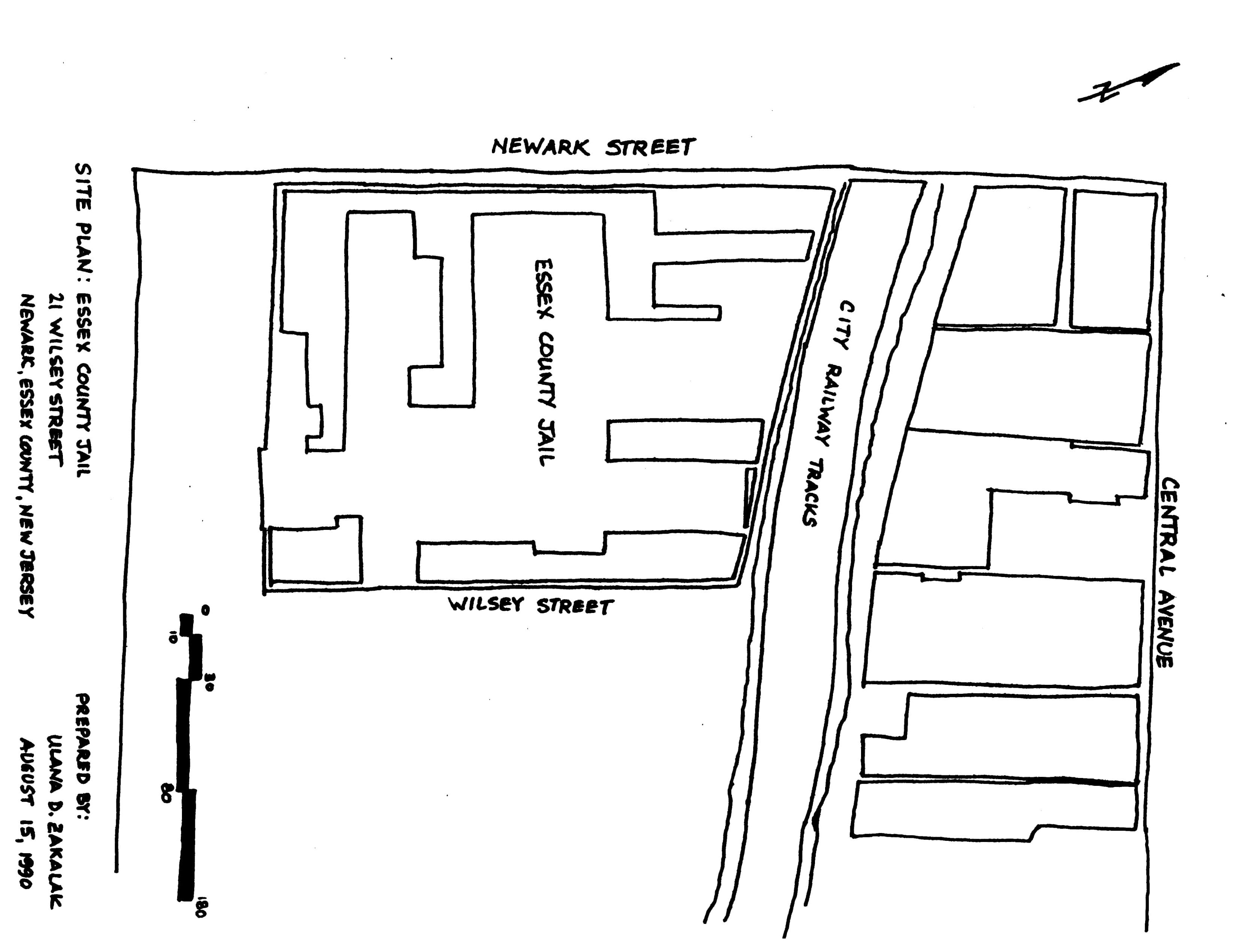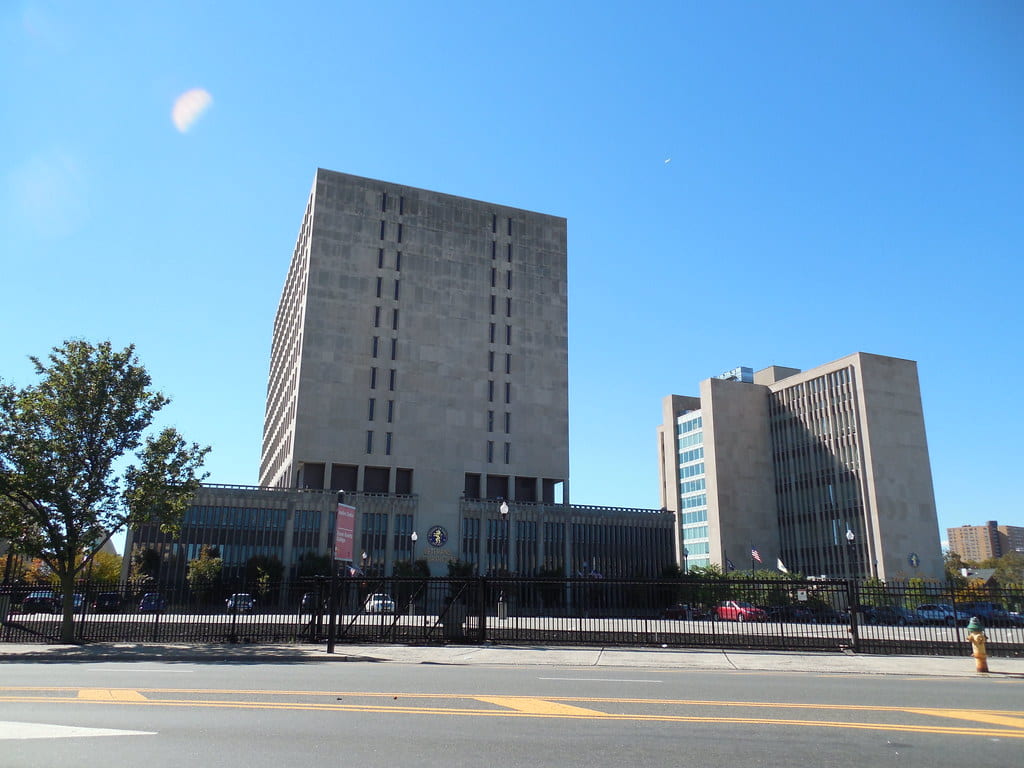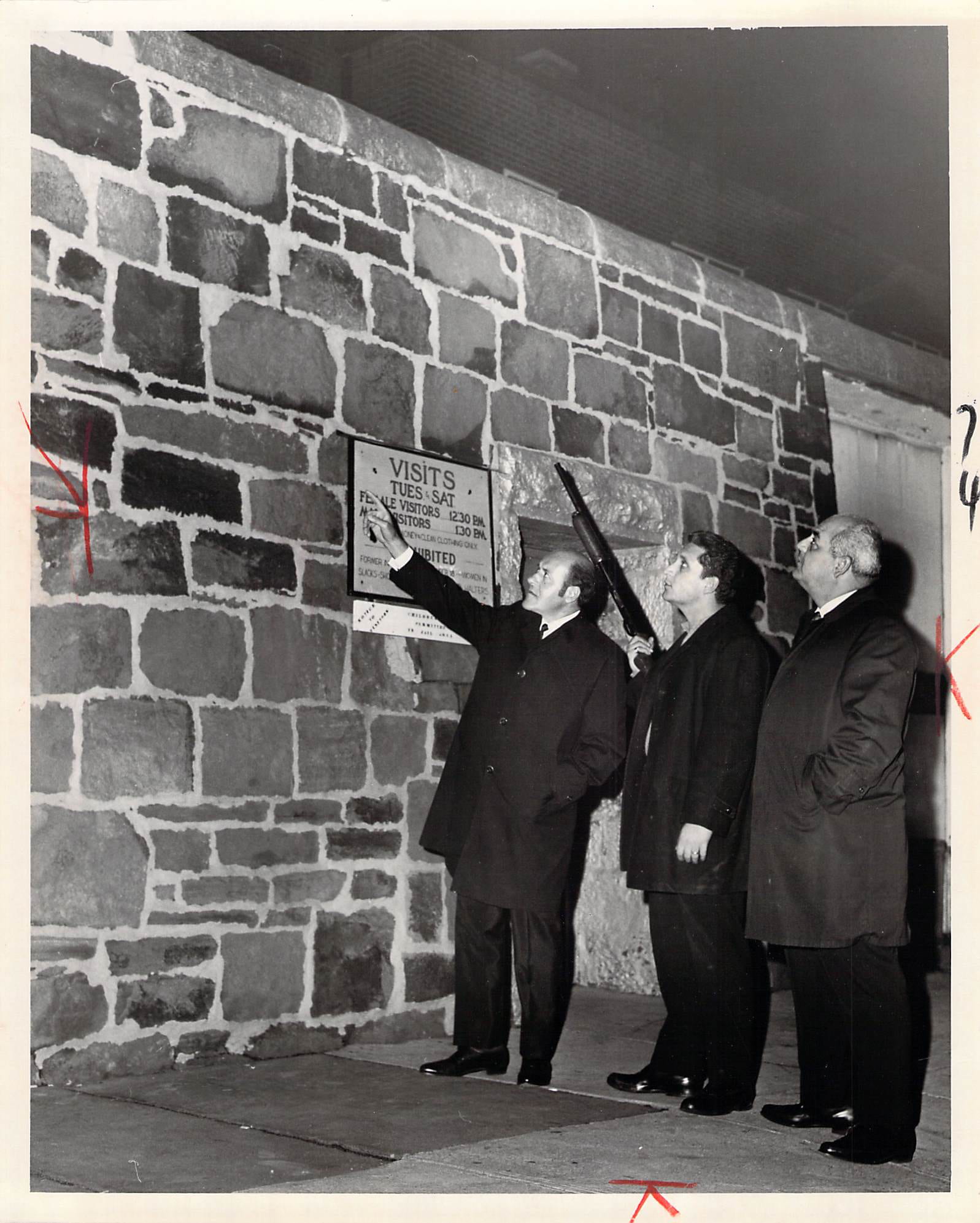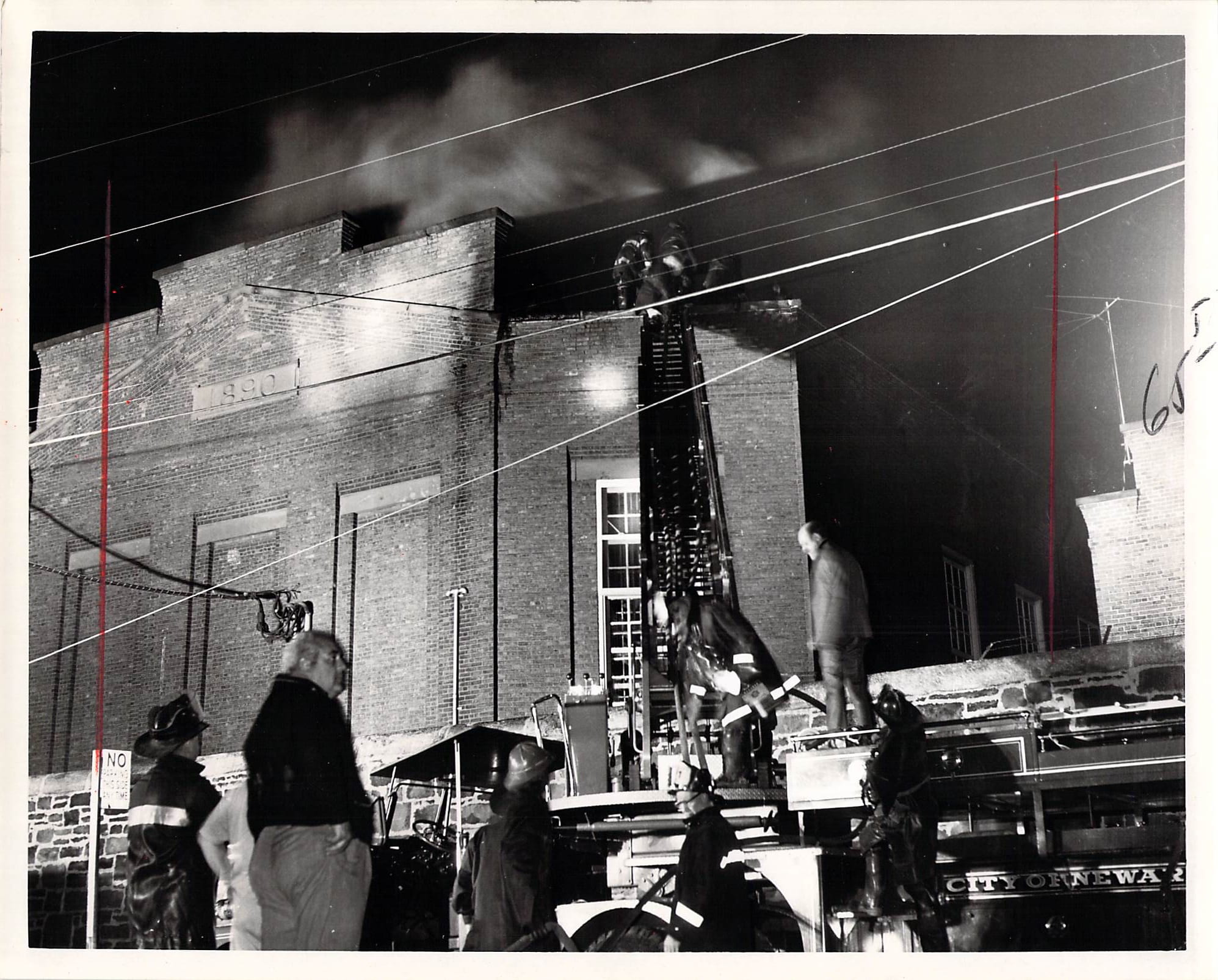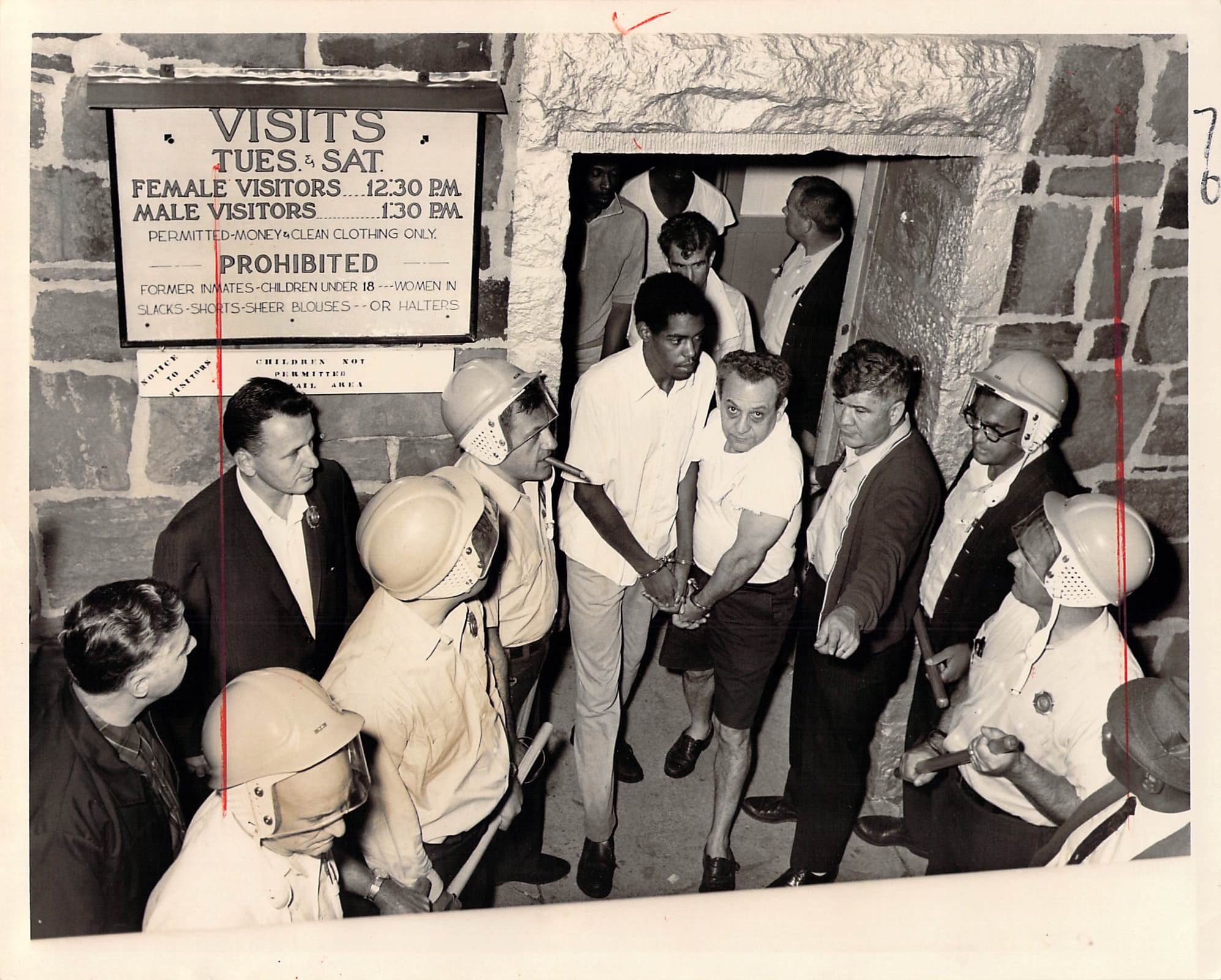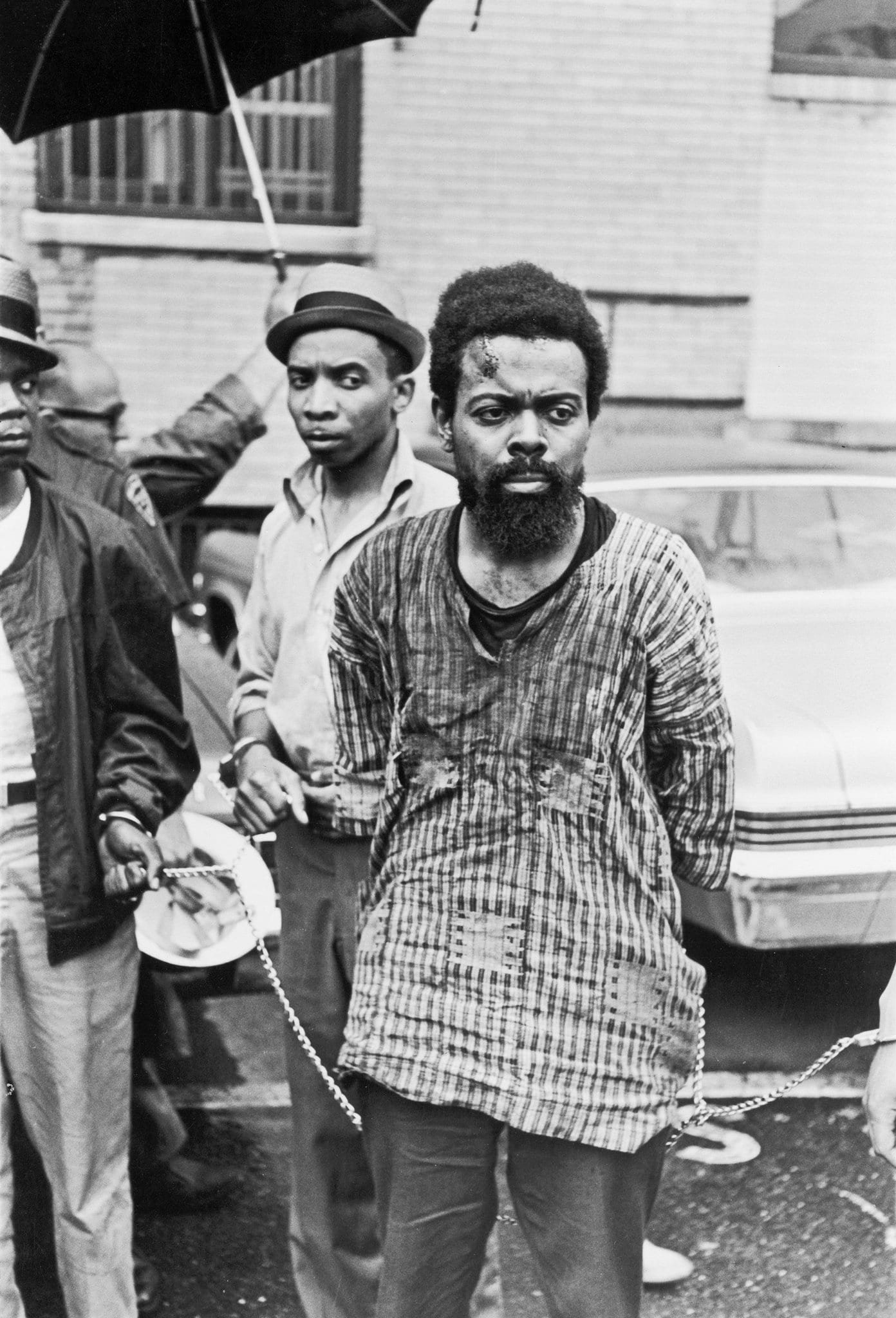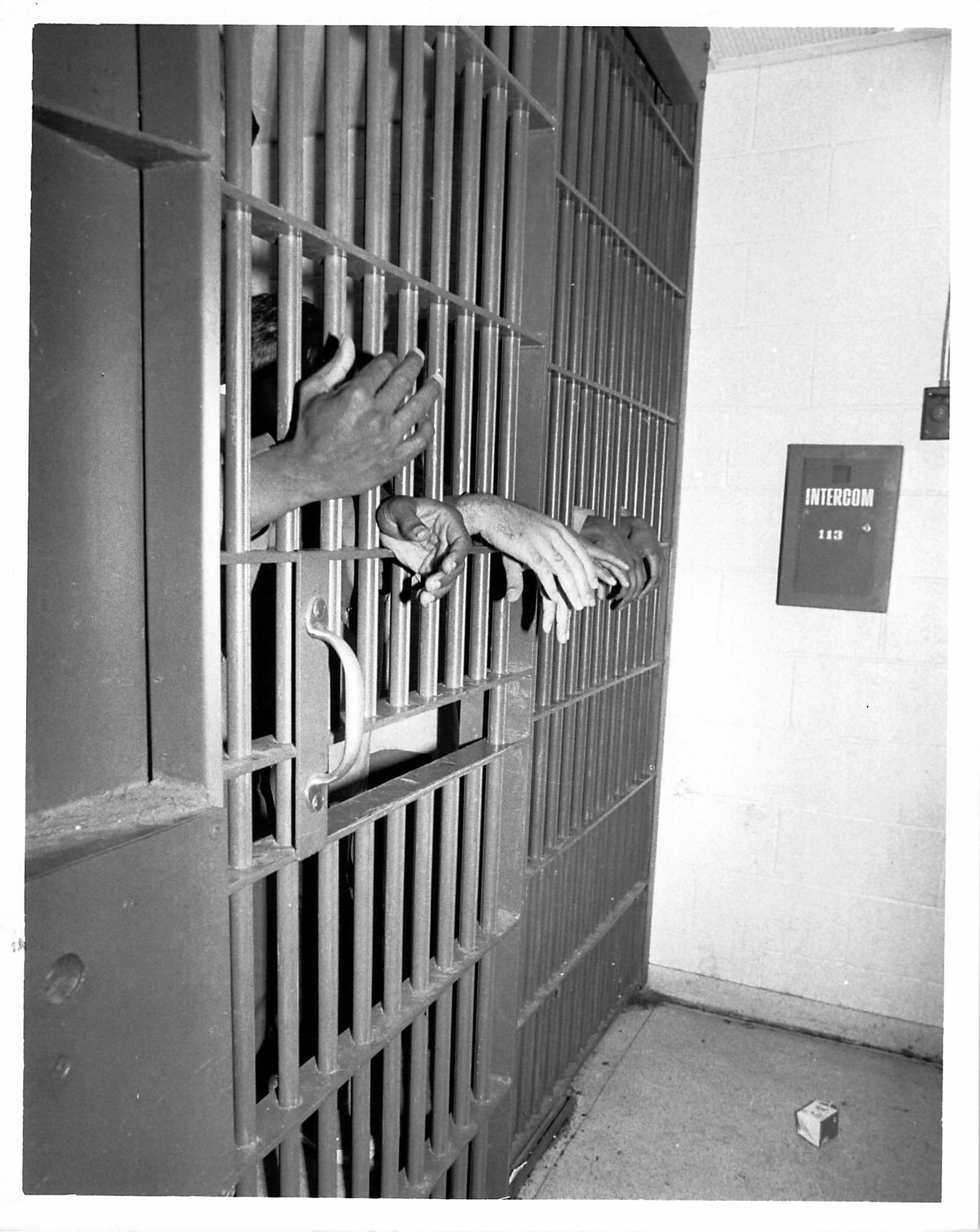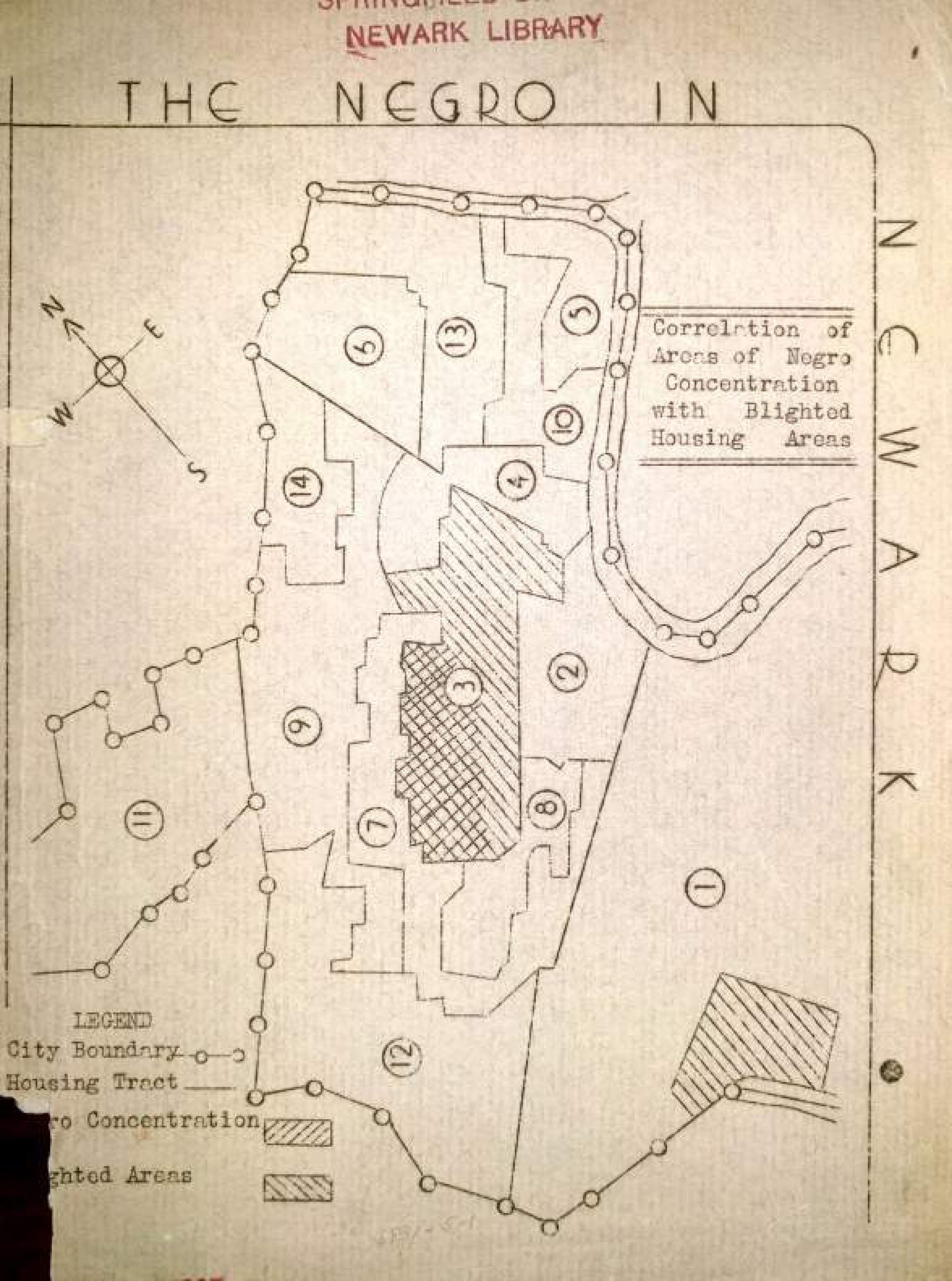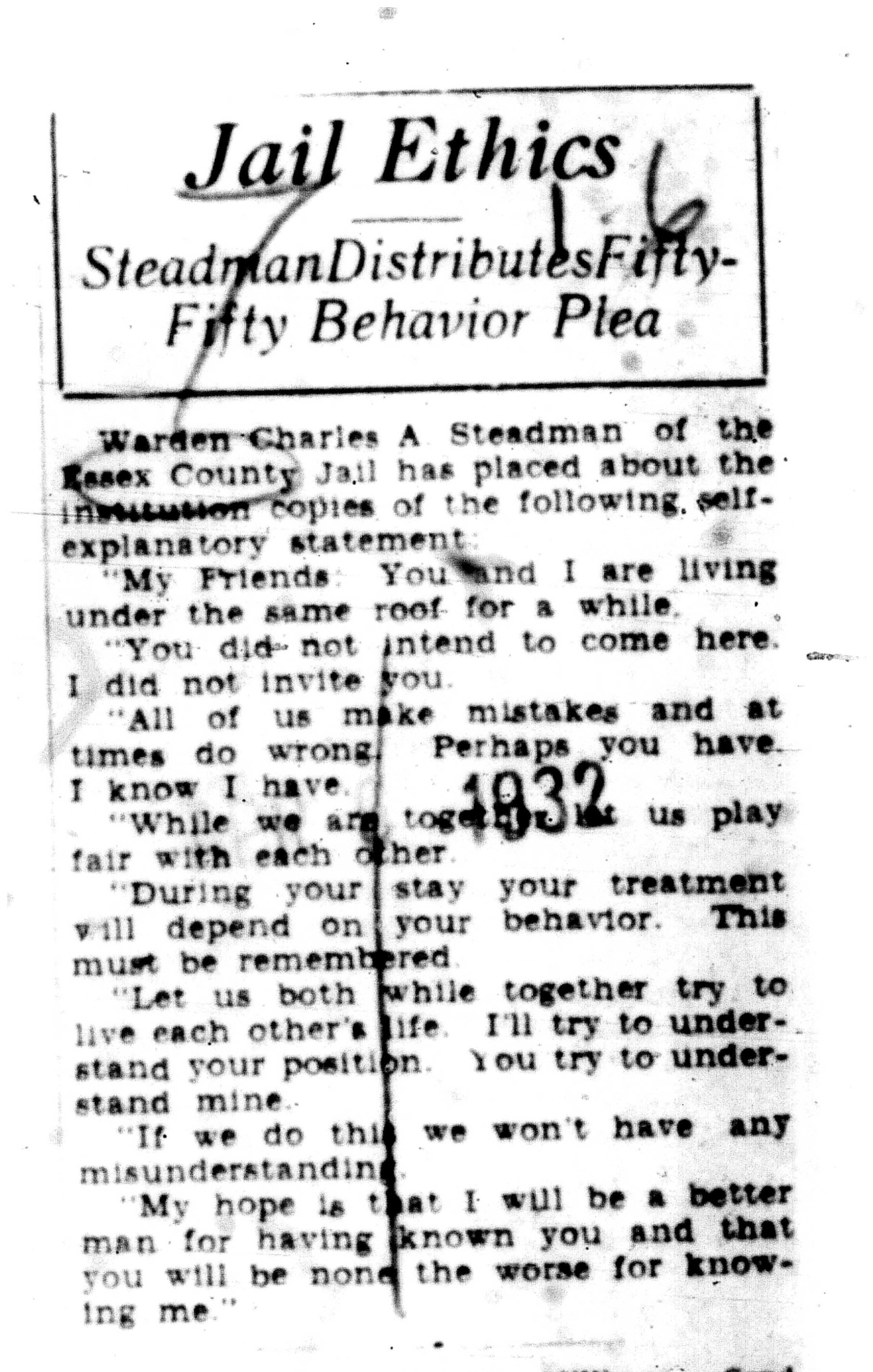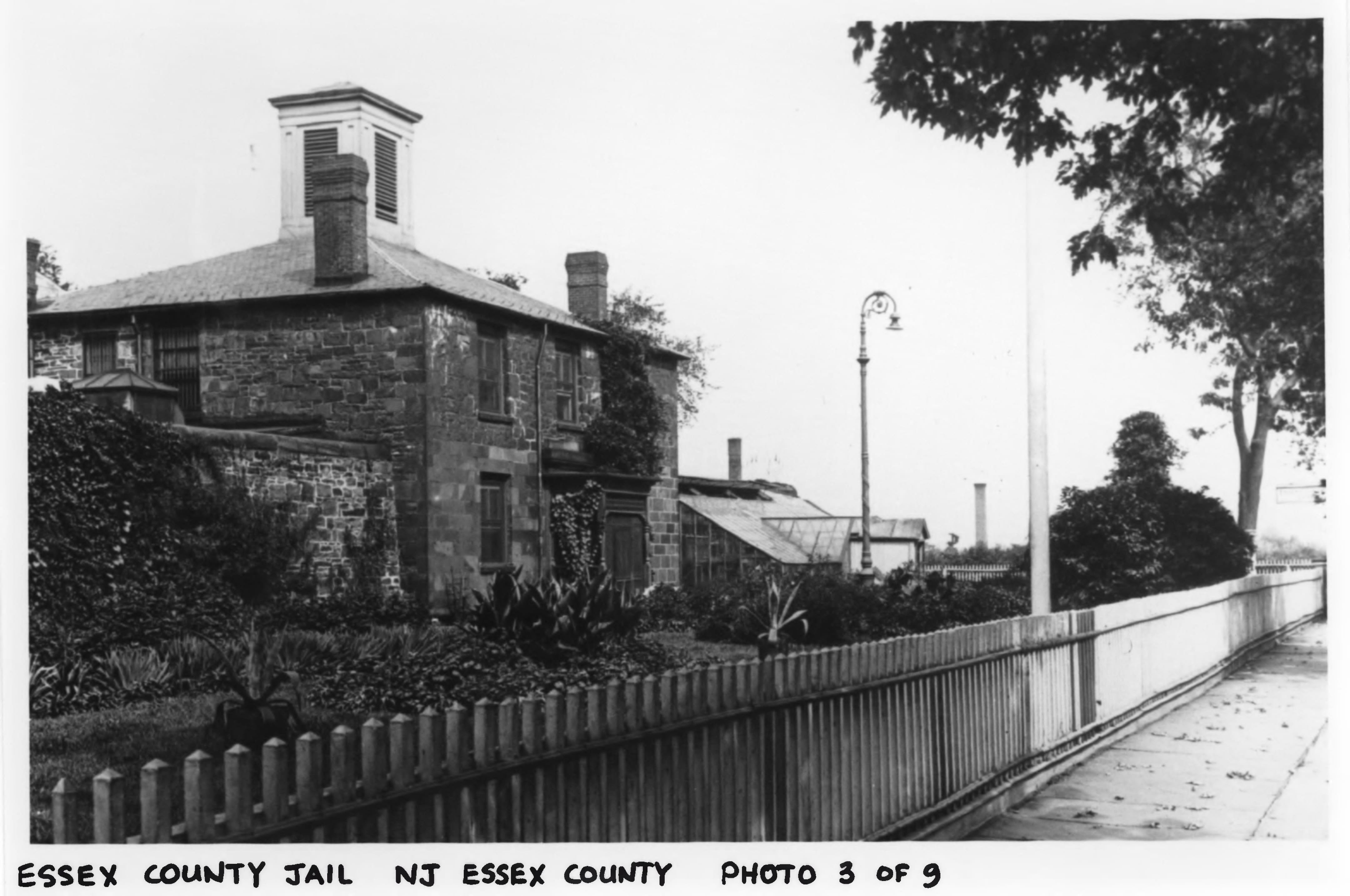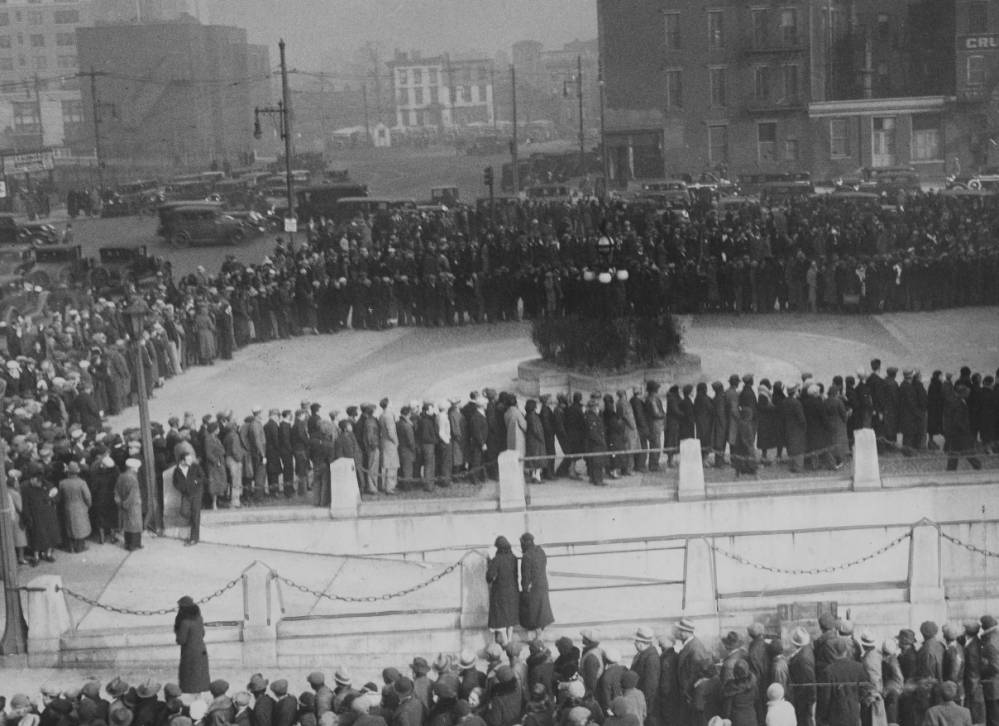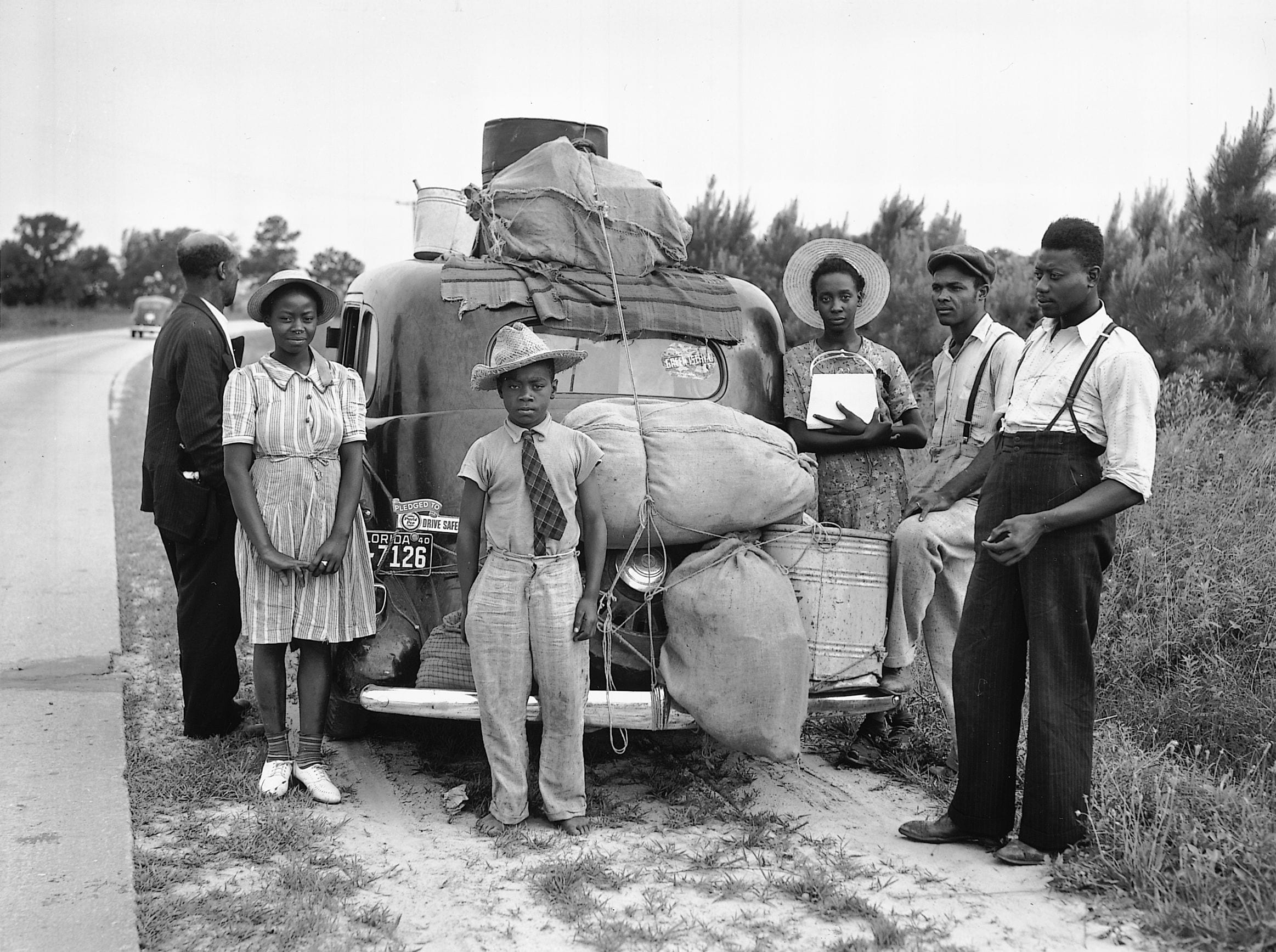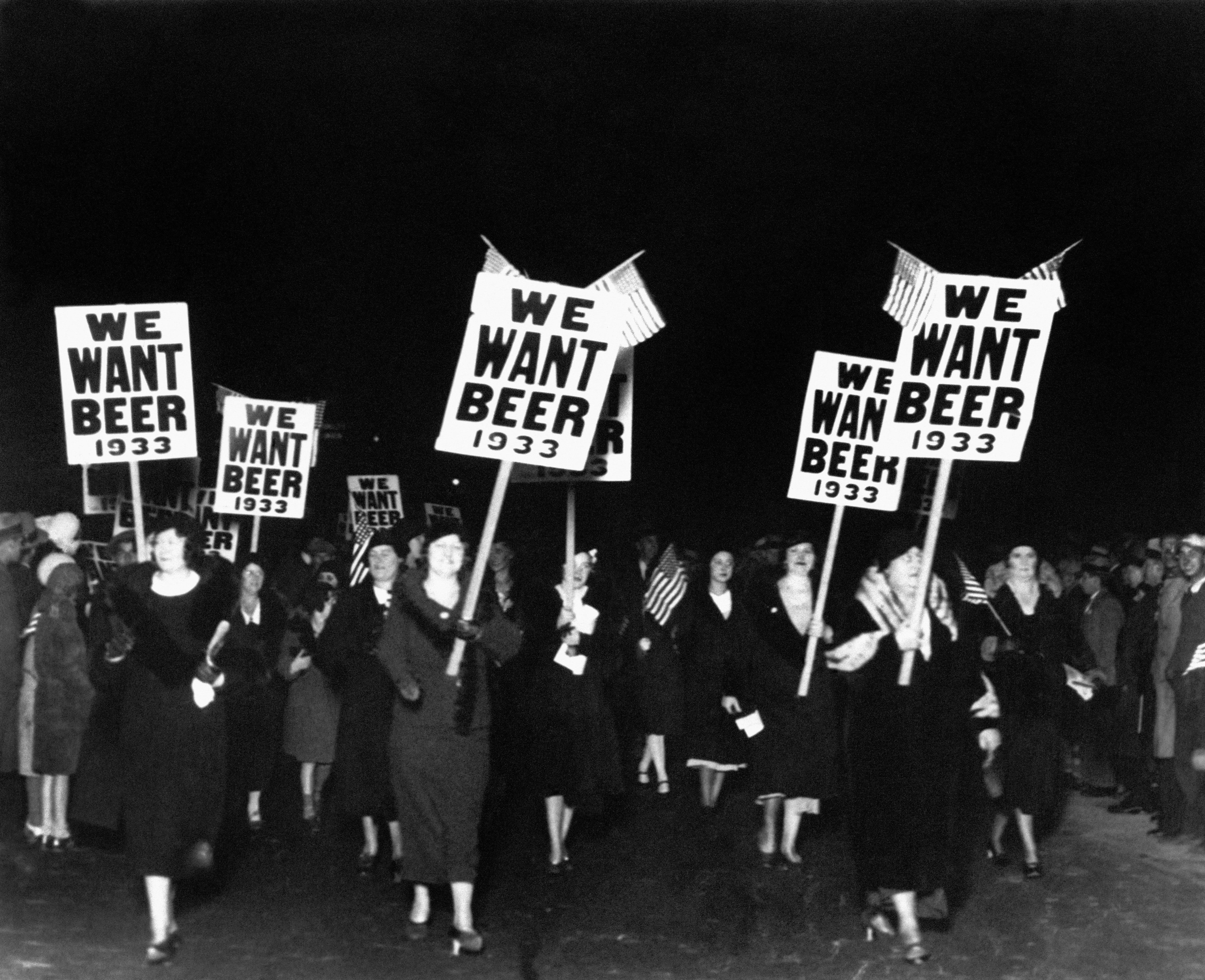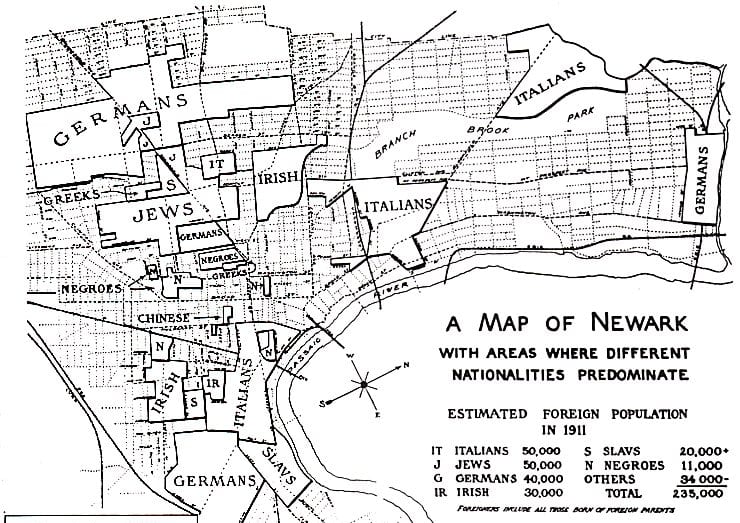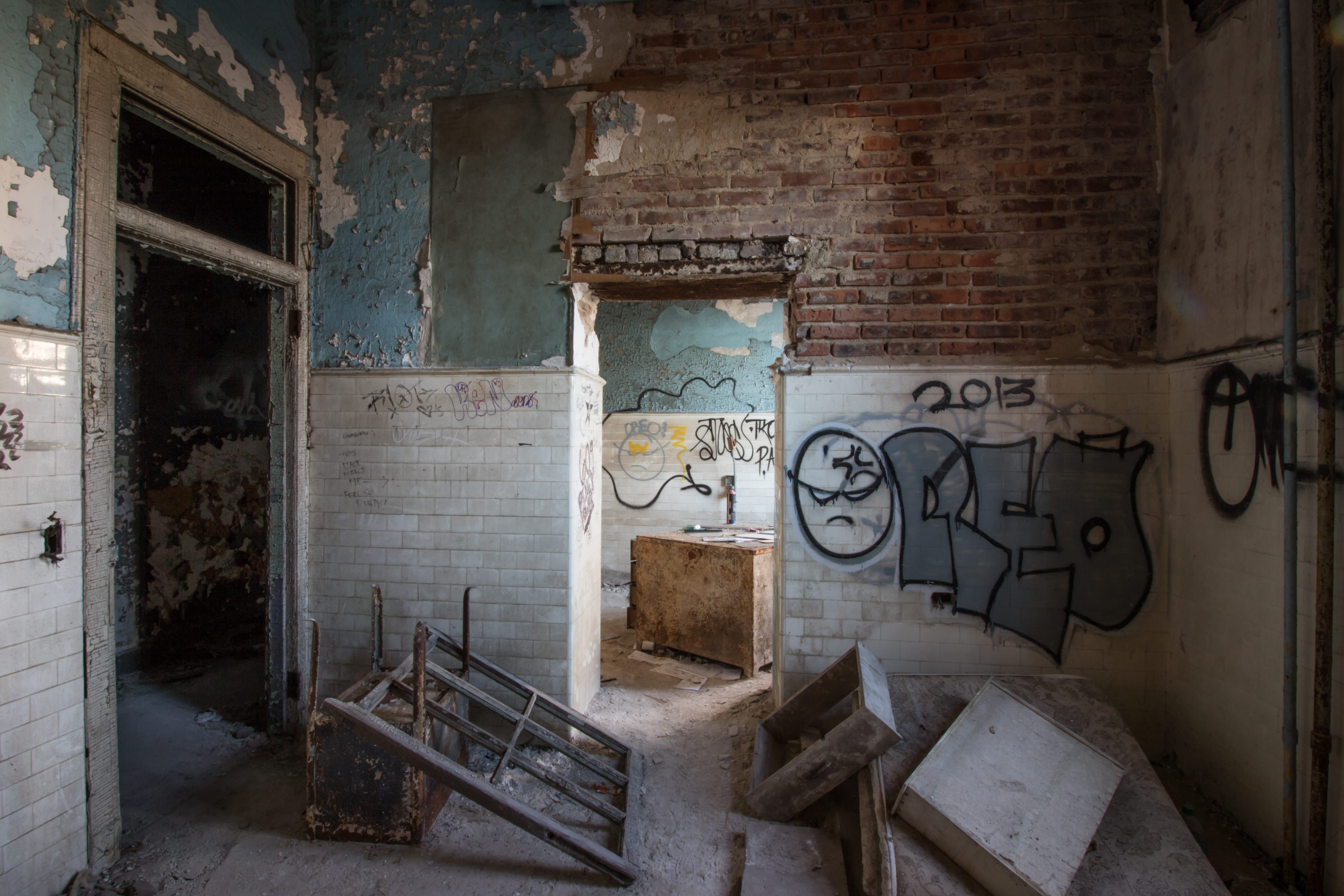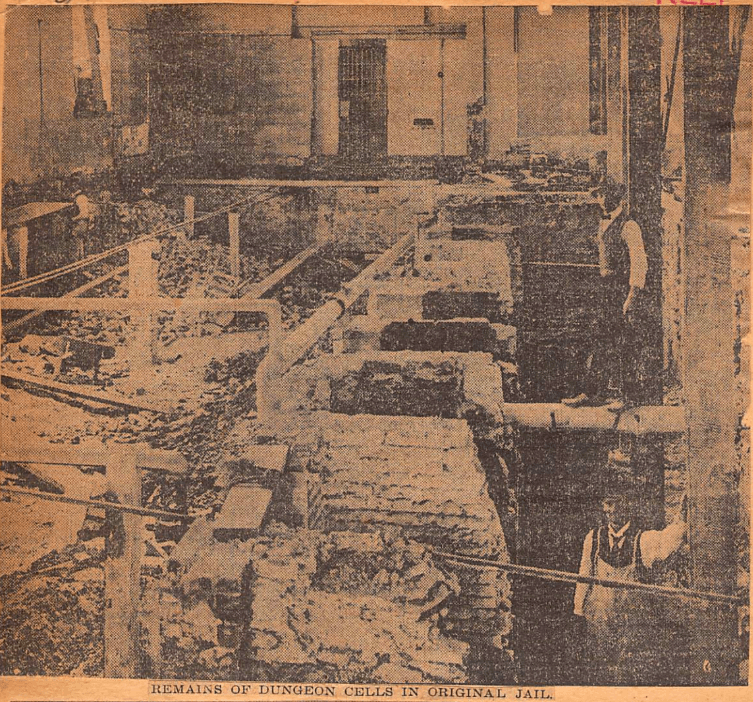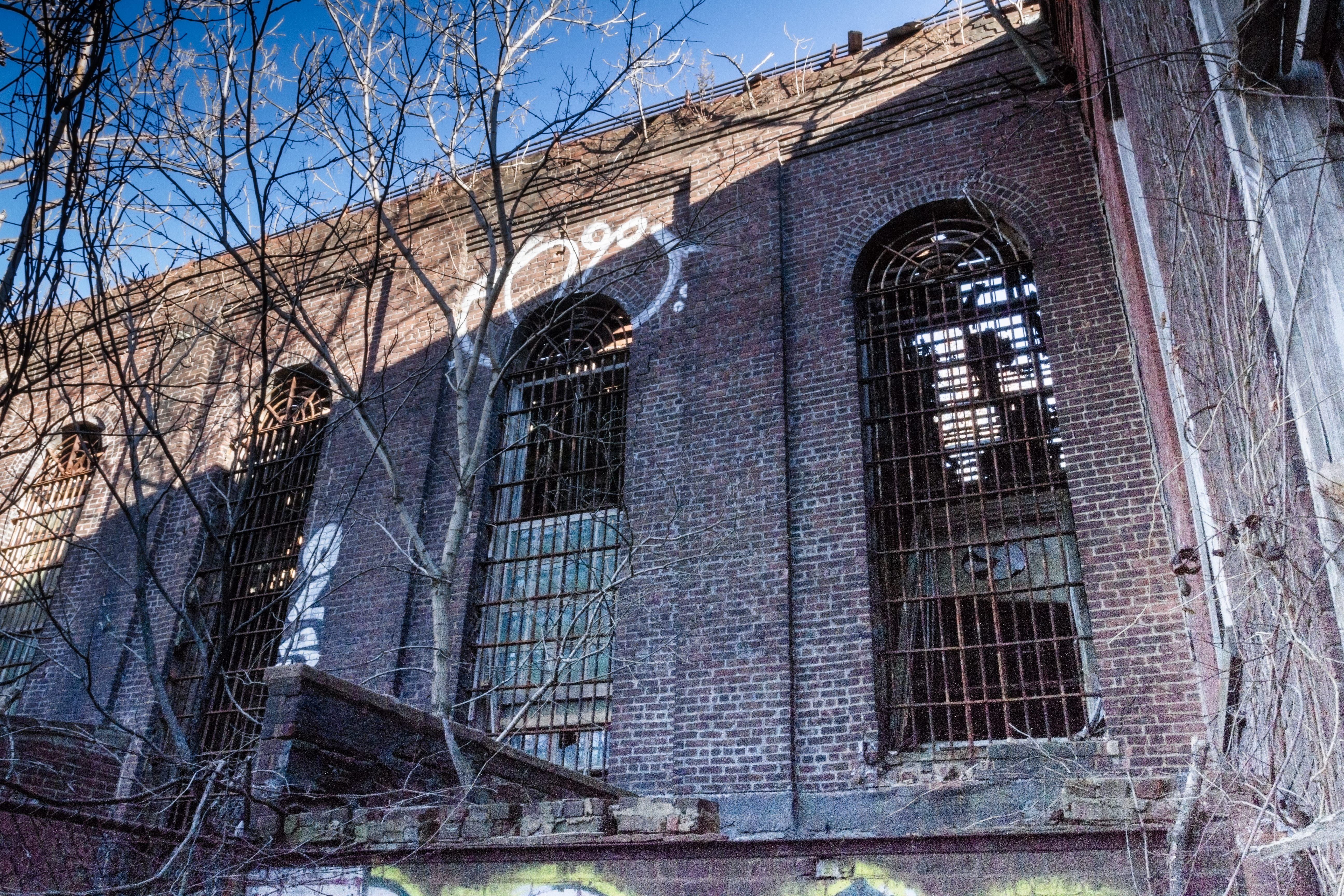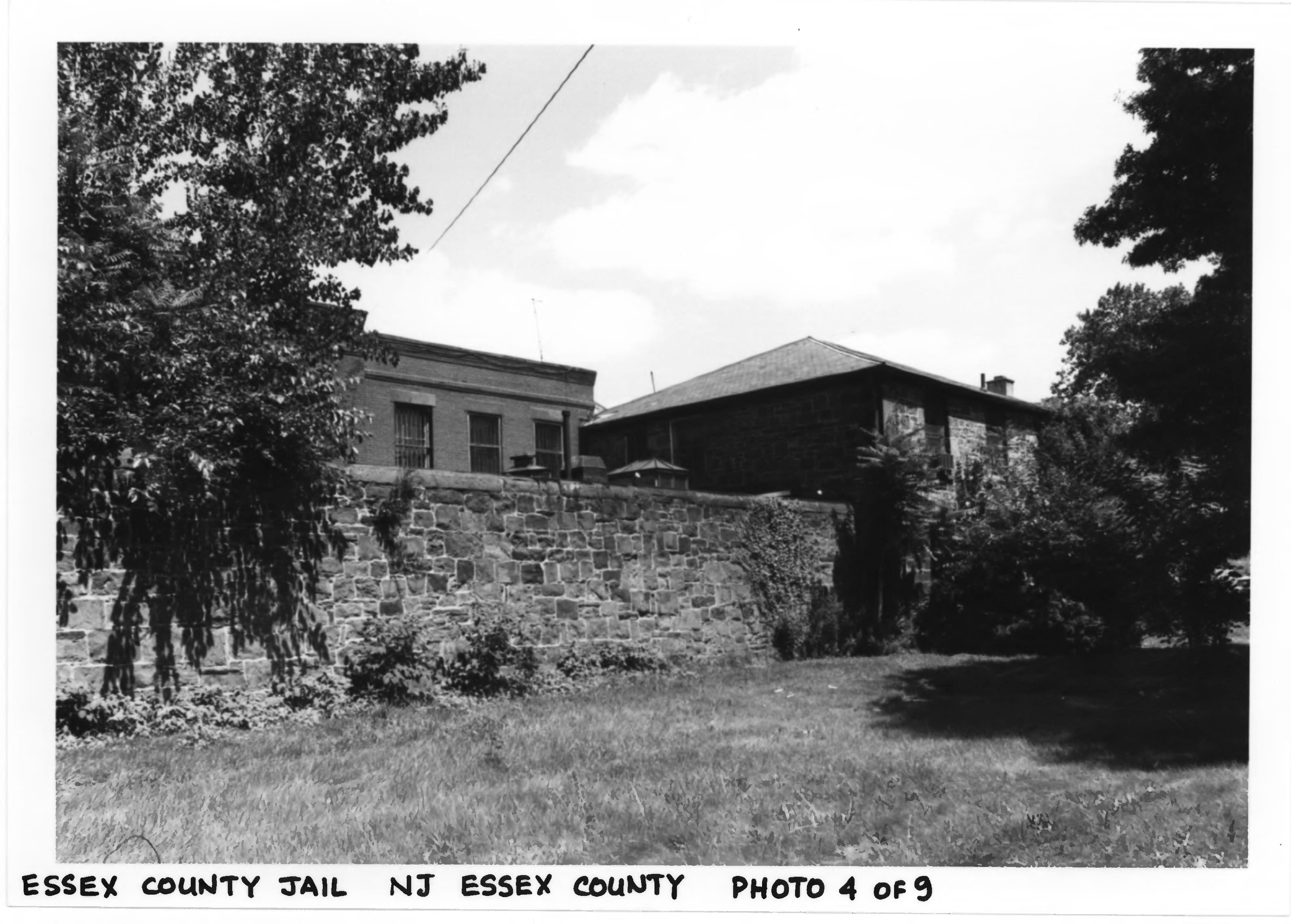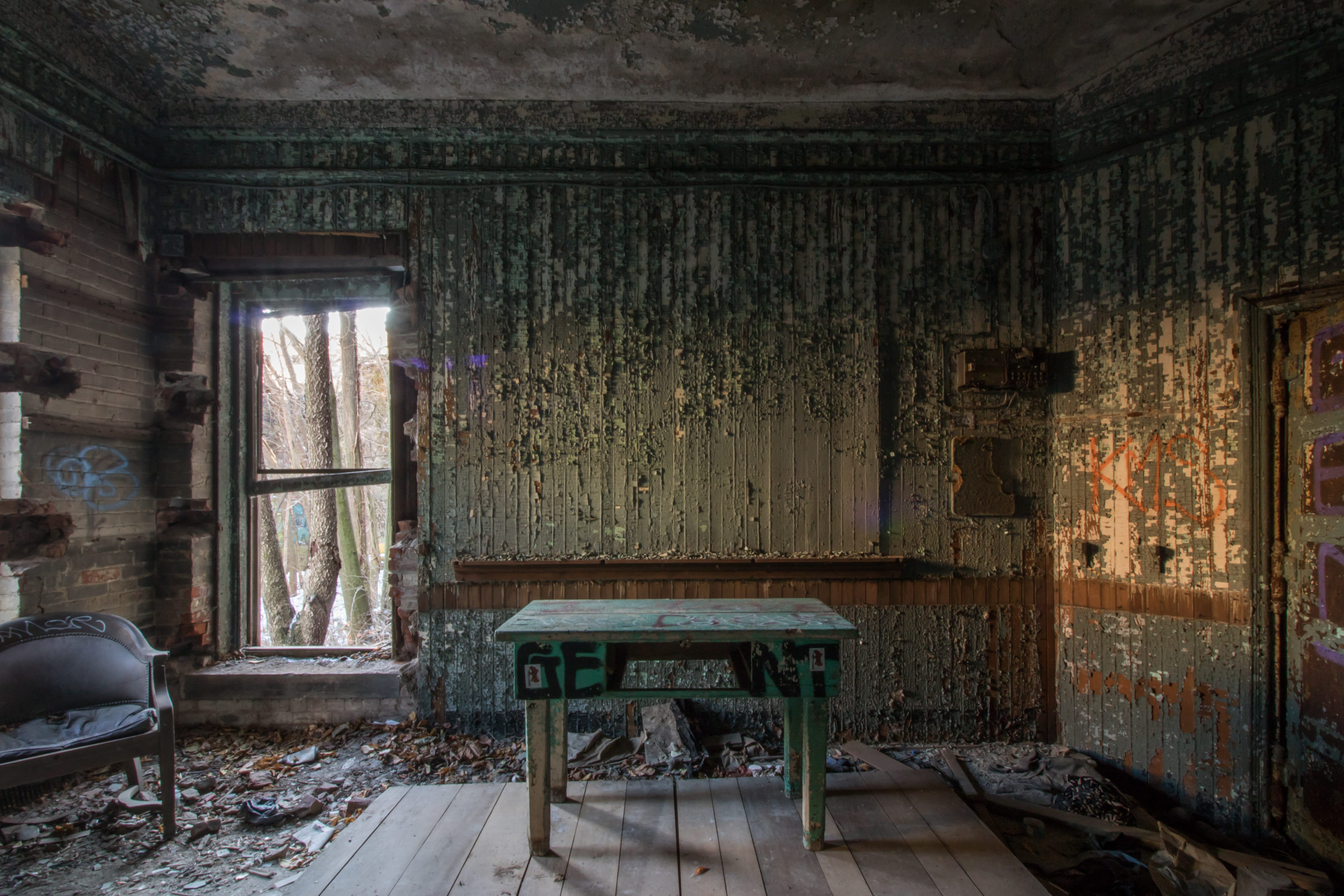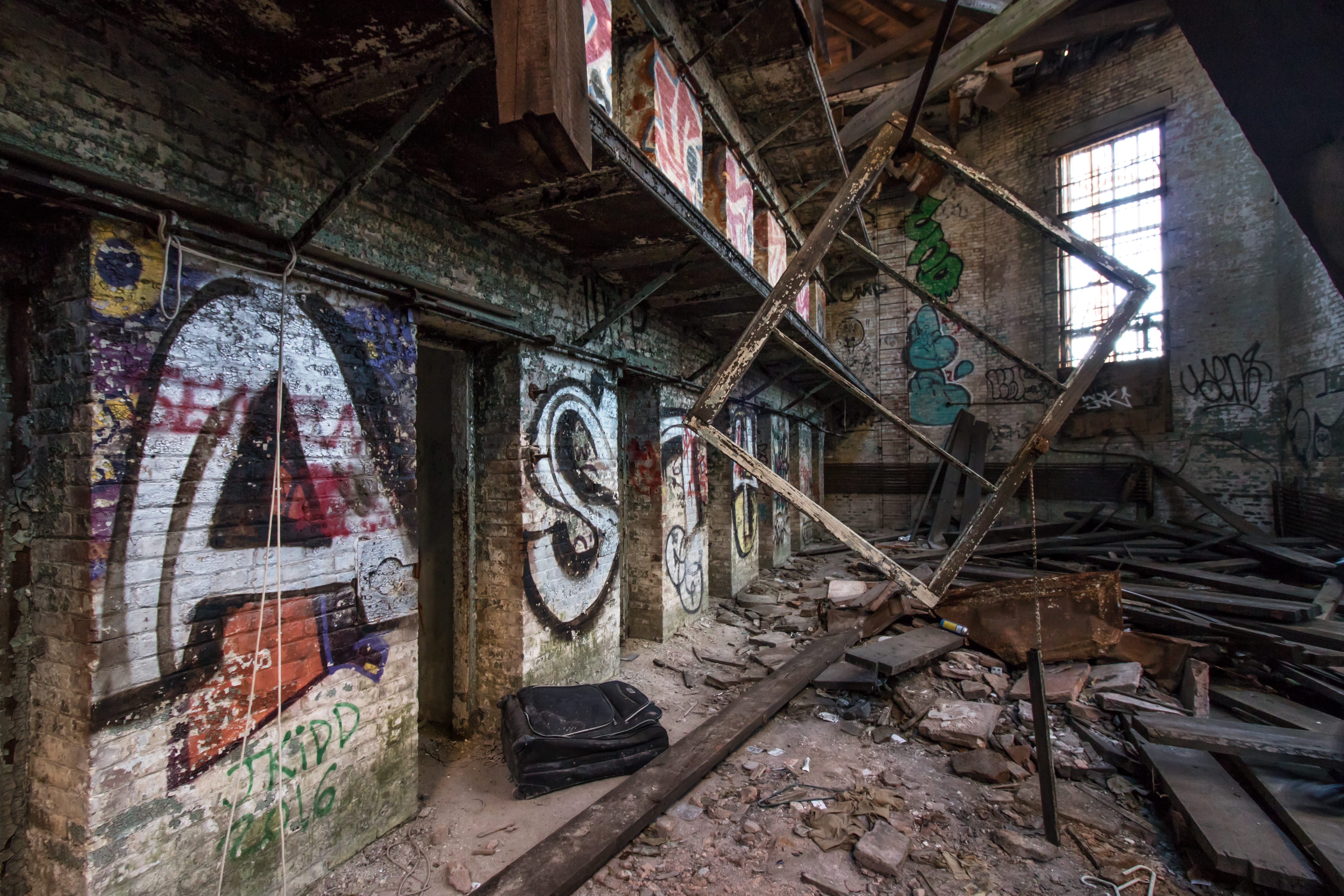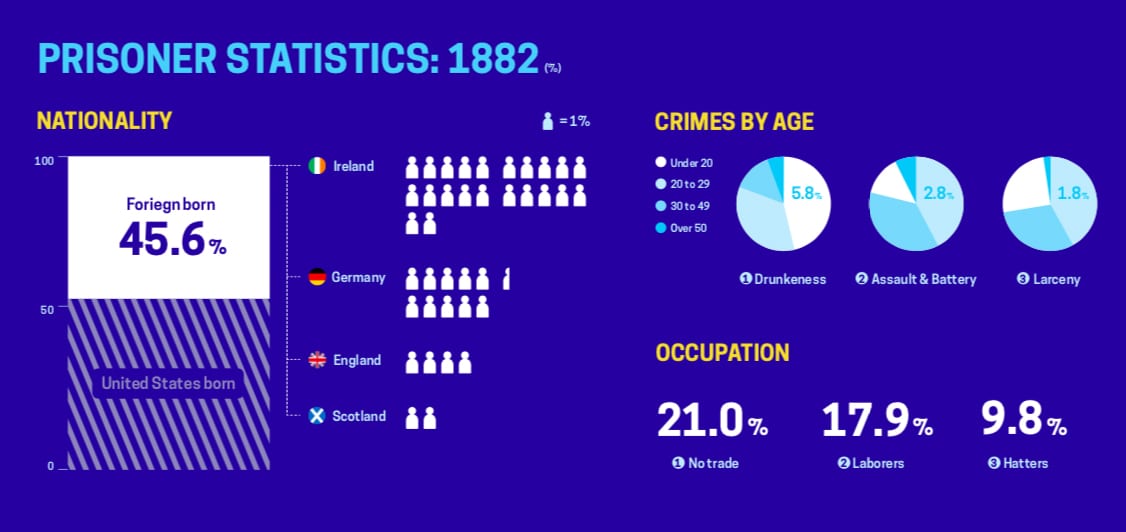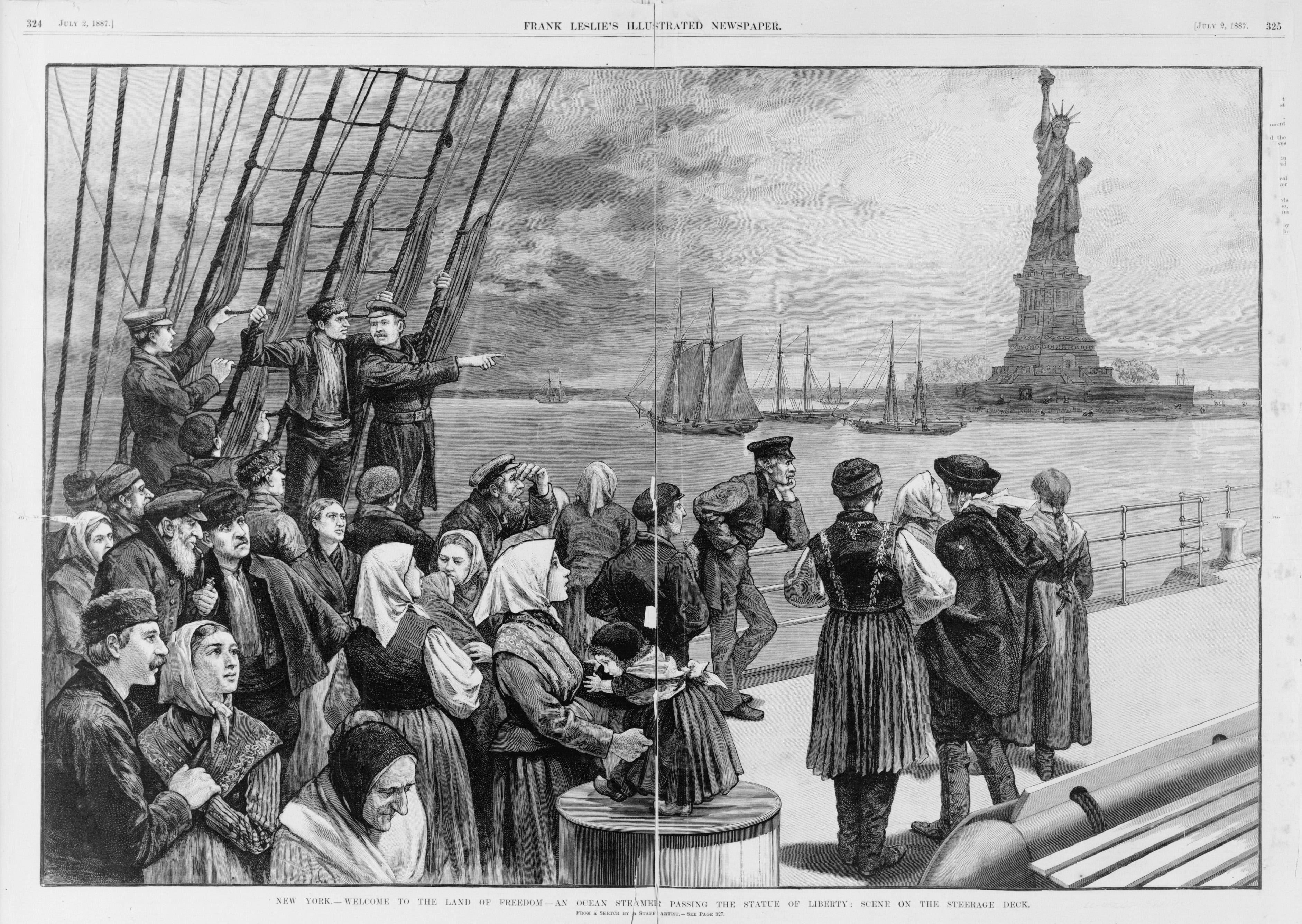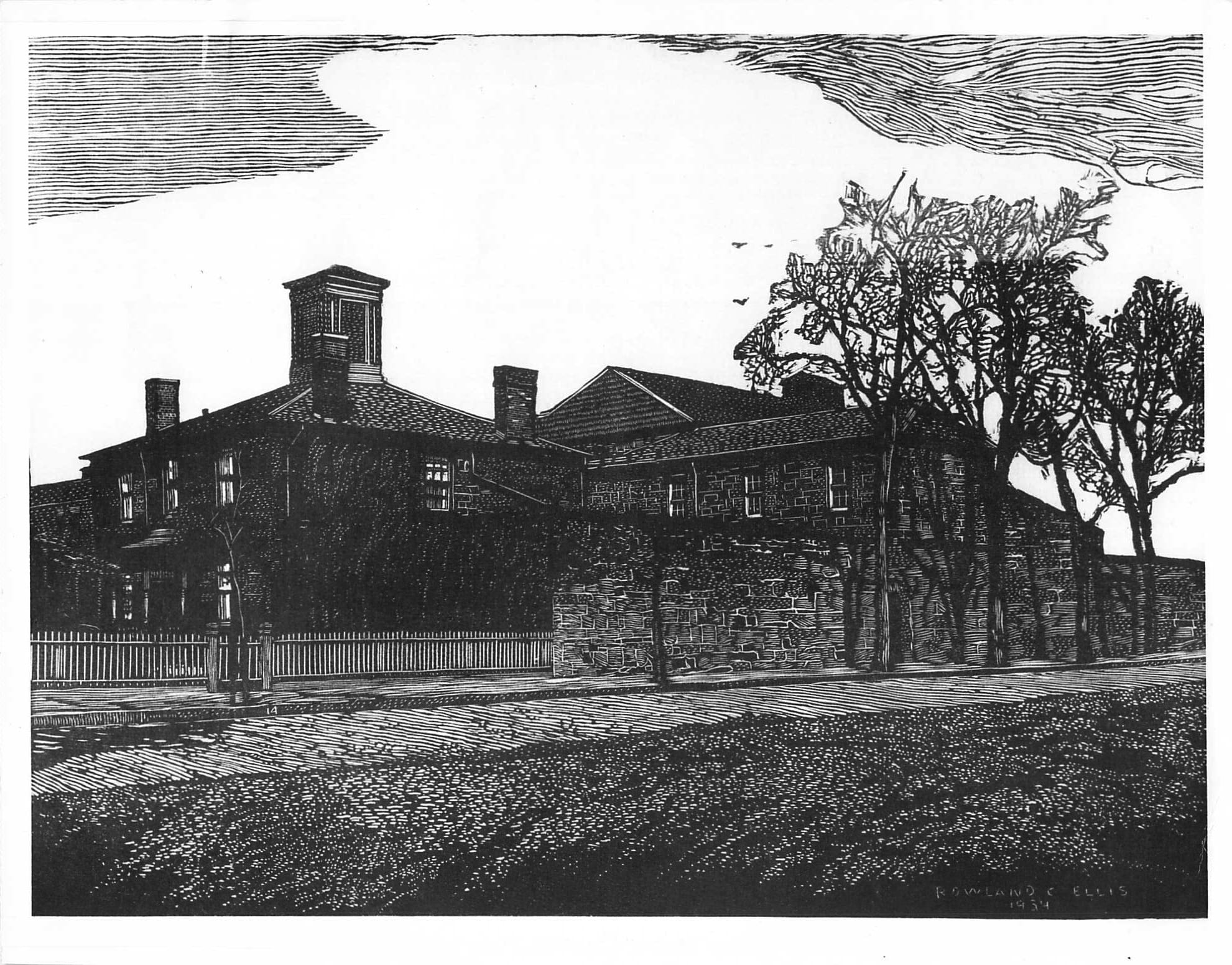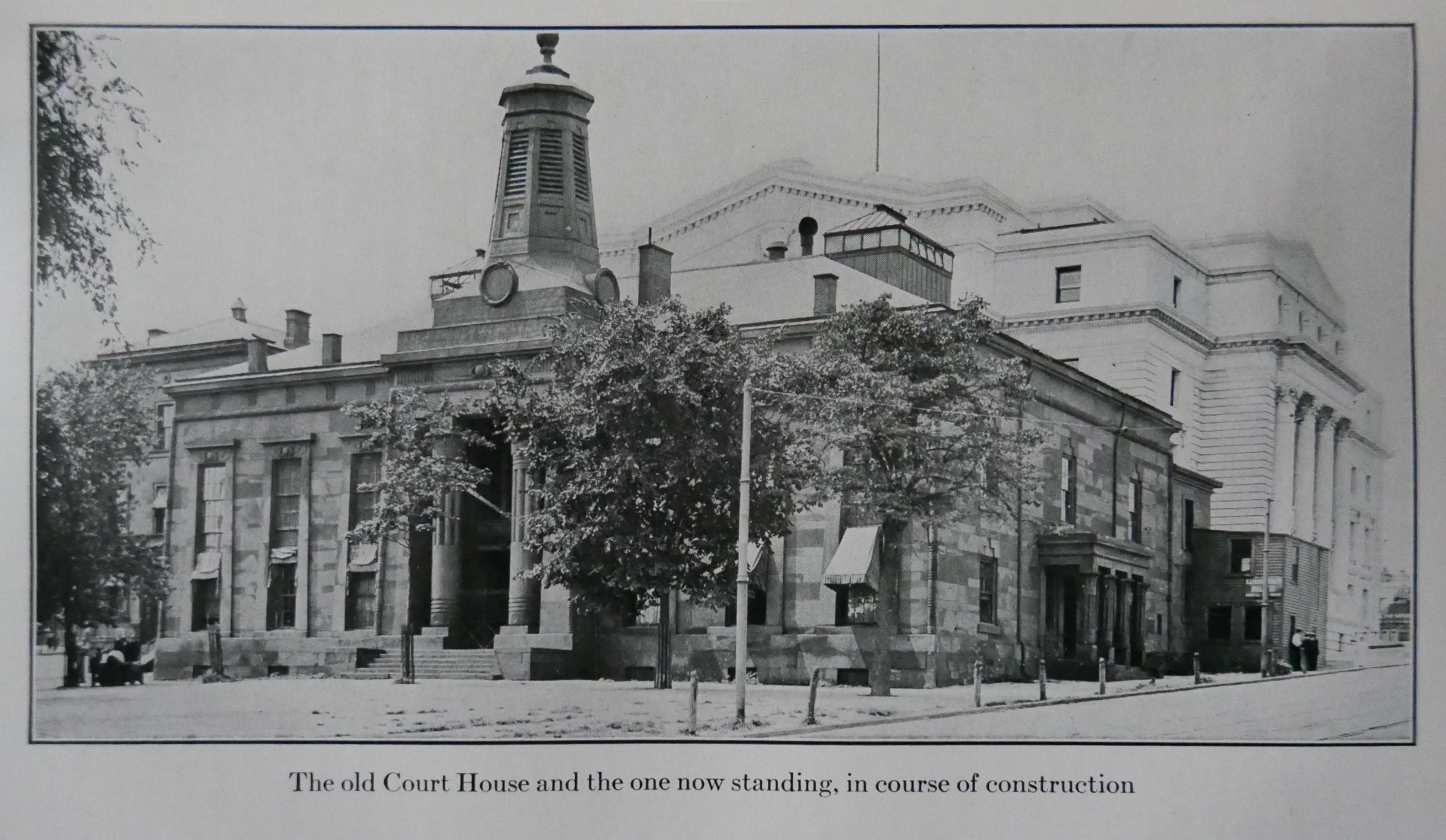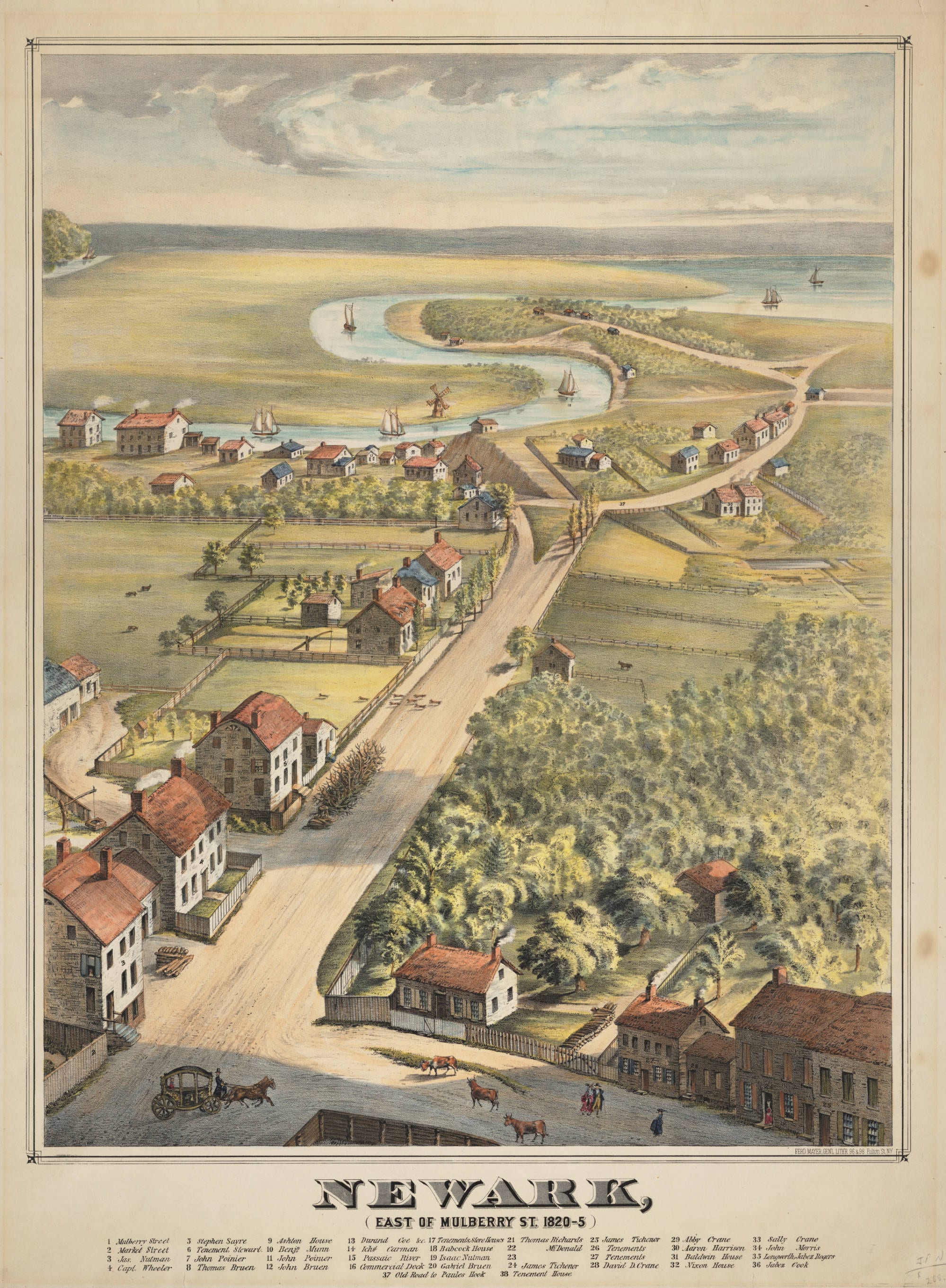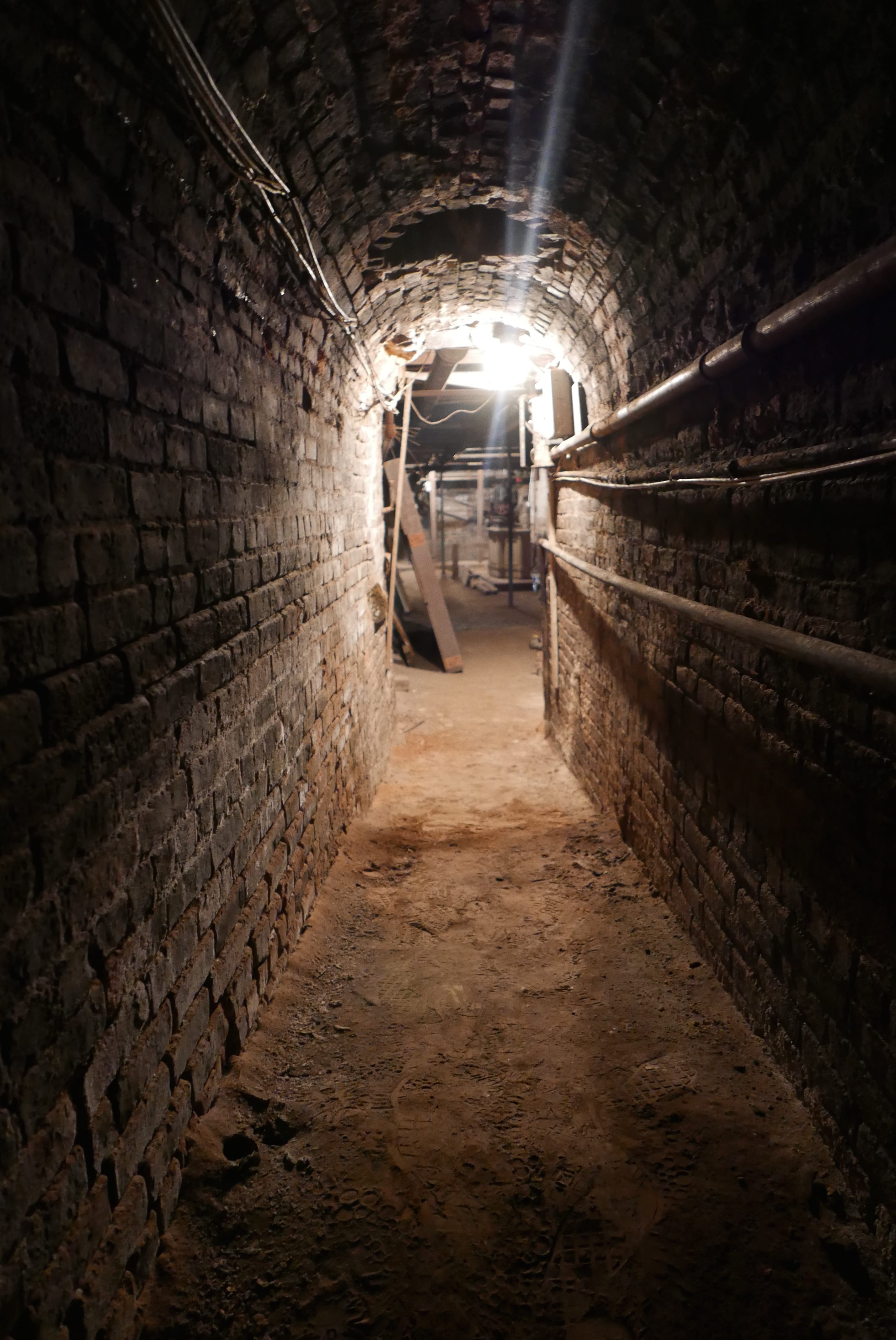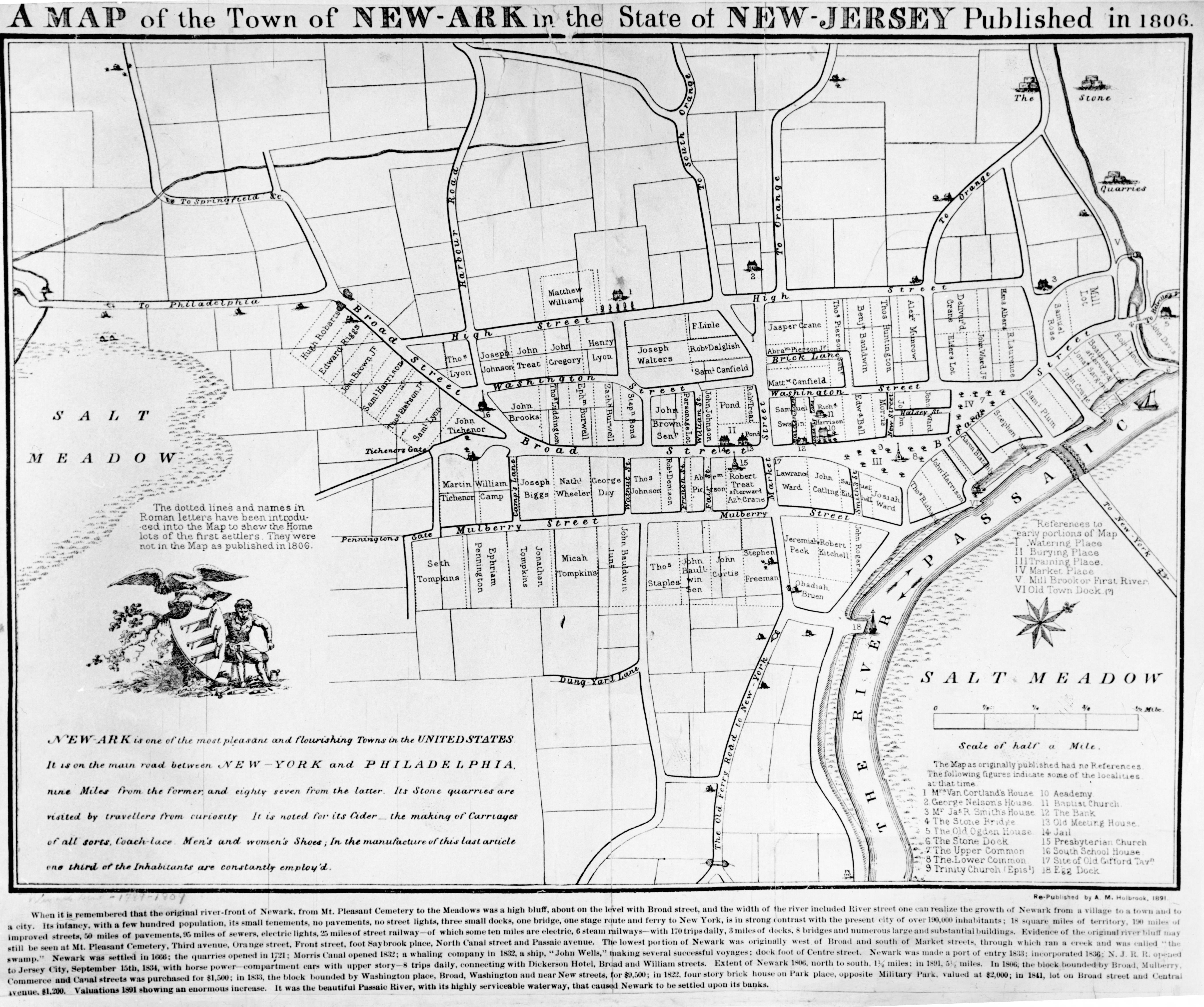As Newark grew from a small town into a large metropolis, the city jail grew alongside and adapted. From the 1890s to the 1930s, new buildings and facilities were gradually added, including a hospital, powerhouse, laundry, and space for prisoners to pass the time. Most individuals here were arrested for petty crimes such as drunkenness, prostitution, and loitering. Unlike today, they served short sentences before rejoining the community. For most of the jail’s lifespan, the warden and his family were required to live and work alongside the prisoners. This state of affairs changed in the late 20th century as a different paradigm in the justice system emerged and stretched this jail, along with all others around the country, beyond capacity.
All news clippings and reports featured below are scanned from the Newark Public Library or New York Times archives. All current site photos by Columbia University GSAPP. All infographics by Yujin Cho.

Image by Columbia University GSAPP
Photo of the Wardens House
On show until September 27 in Newark’s Hahne’s Building. View the exhibit design online.
Alleging the jail poses a danger to public safety, Newark city government proposes to demolish this structure. No plans are made to preserve the structure, to remember the dozens of people executed here, or to commemorate the jail’s significance to Newark history. . Read the article from Jersey Digs.
Arsonists living in the jail set fire to the Women’s Wing. The blaze destroys this 1895 structure and part of the 1837 Warden’s House.
The jail is declared a national landmark for its historical significance. To the left, a hand-drawn jail map from the designation report by Ulana Zakalak for the National Register of Historic Places. . Read Ulana’s report.
The jail is used by the Essex County Sheriff’s Bureau of Narcotics. After the bureau moves out in 1989, hundreds, perhaps thousands, of law enforcement records are left behind, mixing with the trash and other debris from squatters and drug addicts. . Read the New York Times article about these…Read More
A month after the jail’s closure, President Nixon declares a war on drugs. The following decades see a rapid increase in the US prison population from 161 prisoners per 100,000 people in 1972 to 707 prisoners per 100,000 people in 2012. The US now has more prisoners than any other…Read More
Jail closes after 134 years in operation. Inmates are moved to a new and expanded facility, pictured above. The current Essex County Correctional Facility in Newark holds about 2,500 inmates and federal detainees. The rapid growth of the prison industry provokes an uneasy observation by Newark City Historian Charles Cummings:…Read More
Essex sheriff Rahlph D’Ambola, left, and detective John Rellah with shotgun and Chief of Detectives Fred Scriffignana check wall around Newark county jail where nine prisoners escaped last night. At least one was recaptured the next day.
On September 29, riots erupt in the jail on account of poor living conditions and prisoner abuse. For almost a year, the jail has been strained to the breaking point by massive arrests during the urban unrest. Prisoners now fight among themselves, smash furniture, and set fires that burn the…Read More
“This is world America. You are in the trance of the White People. You will be escorted to your cell. In fact you will be pre-born into your cell.” – Amiri Baraka . After a traffic stop in July 1967, poet and activist Amiri Baraka was brutalized and jailed. .…Read More
In July 1967, cab driver John Smith is pulled over by police, arrested, and brutally beaten. This launches a week of chaos, with 26 individuals shot by the National Guard, over 1,000 arrested, and many detained in the Essex County Jail. . Browse photos of the riots and read Time…Read More
Newark becomes a majority Black city, while the city government and police remain majority white.
“Explains Warden Alwin E. Wangner of Bloomfield: …. ‘No prisoner is going to be happy, but we try to keep them reasonably content: The better the morale, the easier it is to keep order.’ …. What is a day like here? It is wait, walk, and sleep – but mostly…Read More
During WWII, many parolees went directly to the military and served honorably with a significantly lower rate of misbehavior than the average soldier. . Read this story in The Newark Call.
Above: This 1936 report from the Newark Interracial Commission describes the living conditions, poverty, and challenges African-Americans faced in Newark. . Read the report.
With the budget cut in the Great Depression, an inmate is fed on 12 cents a day in 1932, six cents less than previous year. (A loaf of bread costs eight cents.) The lower commodity prices and contributions from the penitentiary farm allow Warden Steadman to maintain the food quality.…Read More
The Essex County Jail reportedly has “one of the prettiest flower gardens in Newark,” a hobby for Mr. and Mrs. Steadman, the warden and matron. A few “trusties” among prisoners are rewarded for good behavior to work in the garden as recreation. Large flower beds and an extensive lawn form…Read More
The Great Depression hits Newark. The jail turns crowded. In April 1935, men wait in line to join the excavation of Newark’s subway system, a job paying four dollars for a ten-hour day.
“The Negro in Newark,” Reported by Newark Interracial Commission (1936): The Negro population increased 129% between 1920 and 1930, with 71% born in the south. Though constituting only 9% of Newark’s population, people of color account for 40% of the incarcerations. Only four police officers and eight teachers among 42,000…Read More
Six million African-Americans flee racial violence in the South to seek work in northern cities. The jail’s population of colored inmates nearly triples from 16.8% in 1922 to 45.4% in 1930. . Hear former officer Dave Cannon and Warden John Trezza describe shifting demographics at the old Essex County Jail.
Prohibition turns conscientious citizens into law breakers for relaxing with a whiskey after work. A vast underworld amasses money and power. The Essex County Jail population fluctuates wildly in the 20s, reflecting social and demographic shifts.
Newark is a diverse, multicultural, and politically stable city with large German, Italian, and Irish communities. The city’s diversity is reflected in the demographics of those arrested. . View the above map in detail.
A two story hospital opens on-site to provide inmates with medical care. This reflects the growing public interest in attending to inmates medical needs. . Browse current photos of the hospital.
Photo from 1907 news clipping describing the changes. The East Wing’s 1837 brick cells are demolished and entirely rebuilt in steel. Unlike before, these new cells have plumbing, toilets, and electricity. . Read a news article about the demolition. Or browse current photos of the rebuilt East Wing.
The North Wing opens. Rapists, murderers, and the most serious offenders are housed on one side. Juvenile delinquents are housed on the other. An adjacent Engine Room provides the entire prison, for the first time in its history, with steam heat and electricity. . Browse current photos of the North…Read More
Henry Schaub is executed by hanging for slashing his wife and baby to death. Since then, all death sentences are carried out by electric chair in Trenton.
Women’s Wing (left) and Warden’s House (right) in 1991 A Women’s Wing opens. This allows the guards to separate adult males from females and their young. The Women’s Wing is almost identical in design to the West Wing (1890) and the rebuilt East Wing (c.1907). . Browse current photos of…Read More
To meet growing demand, a new intake office is built at the west of the property. Stairs lead to the Warden’s Office above. . Browse current photos of the Intake Office
Today, about one-third of arrests in New York City are for drug crimes by people of color. In the 1880s, most arrests were for assault, drunkenness, and disorderly conduct; 45.6% of those in this jail were “new” immigrants. . Click here to view infographic. Or browse the original statistics.
– Report on the Conditions of NJ County Jails, released by the Commission on Prison Discipline
“Children as young as nine years old were held in jail for misdemeanors…Juvenile delinquents continued to be imprisoned with adults until 1867 when the first reformatory at Jamesburg was built.” . – Ulana Zakalak, Essex County Jail Historic Building Analysys: Preliminary Draft
Above, photo of the Old Essex County Courthouse around 1907. The current courthouse that replaced this structure is seen rising behind in silhouette.
In one of the first government acts, city fathers and county commissioners construct a courthouse and the Essex County Jail.
Newark is incorporated as a city: “Though Newark was technically still only a township in the early 1830s, ‘city’ problems—crime, poverty, housing shortages, general filth—had already surfaced alongside the extraordinary population growth. According to an 1836 report from the State Temperance Society, in the preceding 18 months, 517 people had…Read More
Essex County builds its courthouse with a jail in the dark and damp basement dungeons at the location, where Grace Church now stands. The structure will burn down in 1835. . Read the 1927 Star-Ledger article about these dungeons.
Puritan settlers from New Haven, Connecticut settle Newark as a religious utopia. The village economy of under 1,500 people relies entirely on agriculture.
Liked what you saw? Explore more primary sources and news articles here. Or browse all contemporary site photos here.

